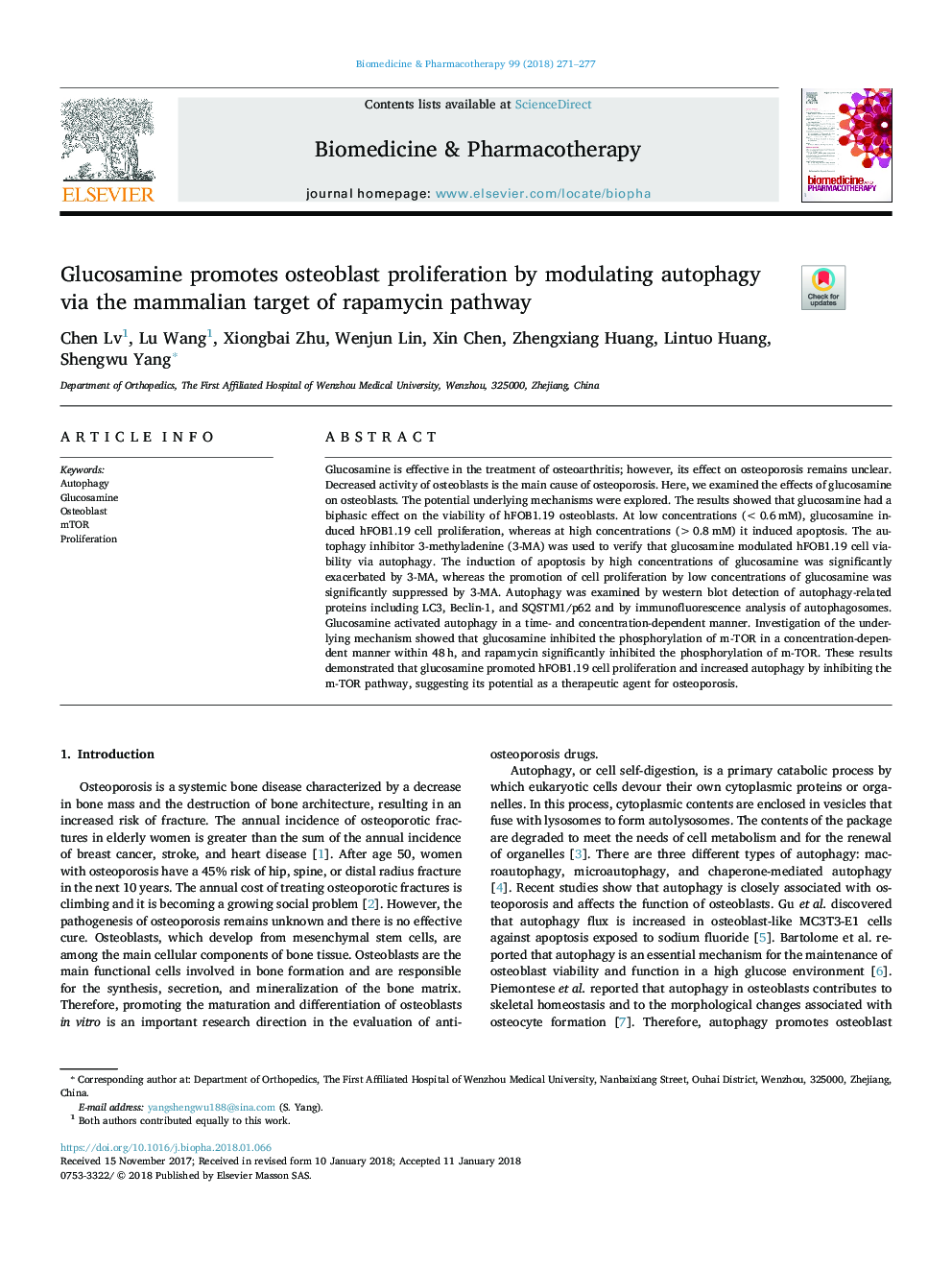| Article ID | Journal | Published Year | Pages | File Type |
|---|---|---|---|---|
| 8525997 | Biomedicine & Pharmacotherapy | 2018 | 7 Pages |
Abstract
Glucosamine is effective in the treatment of osteoarthritis; however, its effect on osteoporosis remains unclear. Decreased activity of osteoblasts is the main cause of osteoporosis. Here, we examined the effects of glucosamine on osteoblasts. The potential underlying mechanisms were explored. The results showed that glucosamine had a biphasic effect on the viability of hFOB1.19 osteoblasts. At low concentrations (<0.6â¯mM), glucosamine induced hFOB1.19 cell proliferation, whereas at high concentrations (>0.8â¯mM) it induced apoptosis. The autophagy inhibitor 3-methyladenine (3-MA) was used to verify that glucosamine modulated hFOB1.19 cell viability via autophagy. The induction of apoptosis by high concentrations of glucosamine was significantly exacerbated by 3-MA, whereas the promotion of cell proliferation by low concentrations of glucosamine was significantly suppressed by 3-MA. Autophagy was examined by western blot detection of autophagy-related proteins including LC3, Beclin-1, and SQSTM1/p62 and by immunofluorescence analysis of autophagosomes. Glucosamine activated autophagy in a time- and concentration-dependent manner. Investigation of the underlying mechanism showed that glucosamine inhibited the phosphorylation of m-TOR in a concentration-dependent manner within 48â¯h, and rapamycin significantly inhibited the phosphorylation of m-TOR. These results demonstrated that glucosamine promoted hFOB1.19 cell proliferation and increased autophagy by inhibiting the m-TOR pathway, suggesting its potential as a therapeutic agent for osteoporosis.
Related Topics
Health Sciences
Medicine and Dentistry
Oncology
Authors
Chen Lv, Lu Wang, Xiongbai Zhu, Wenjun Lin, Xin Chen, Zhengxiang Huang, Lintuo Huang, Shengwu Yang,
